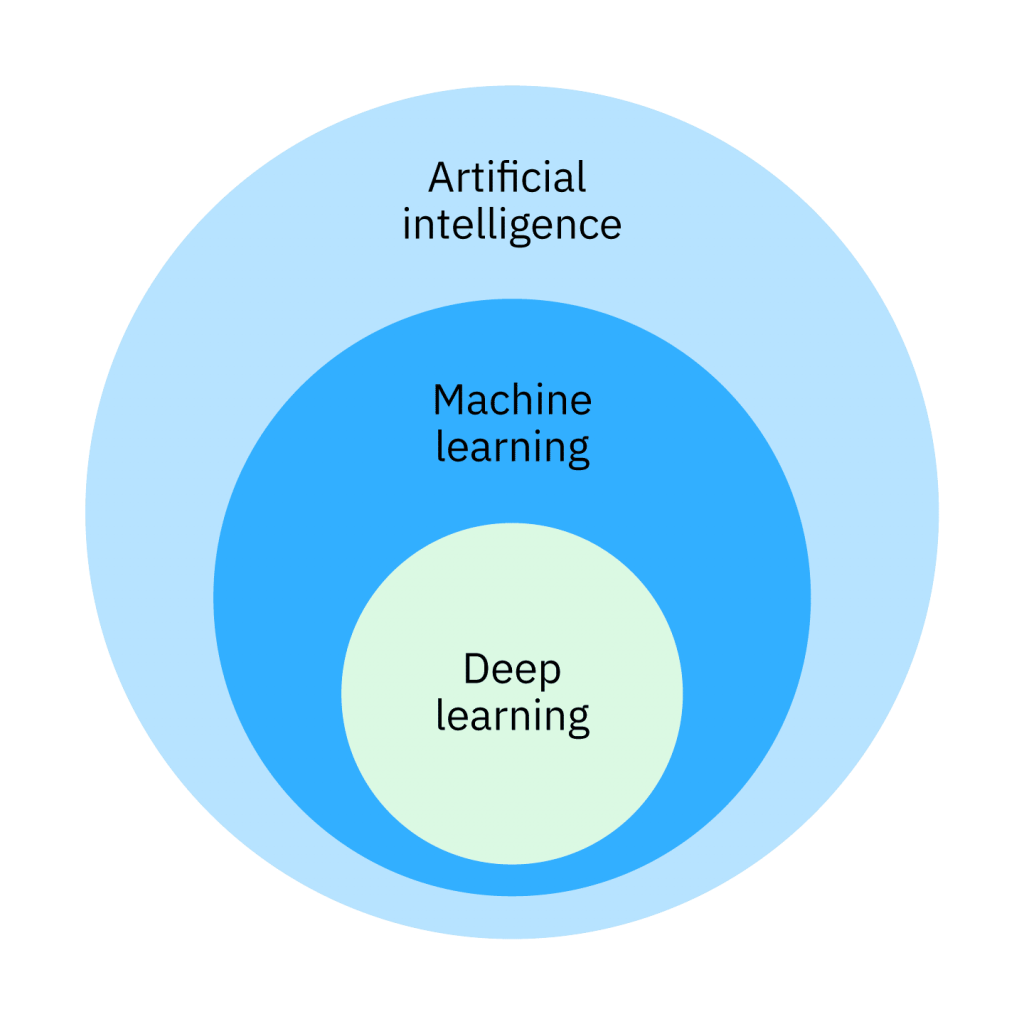Machine Learning (ML), Deep Learning (DL), and Neural Networks (NN) are interconnected fields within the realm of artificial intelligence (AI), each building upon the other.

- Machine Learning (ML):
- Definition: Machine Learning is a subset of AI that enables machines to improve at tasks with experience. It involves algorithms that can learn from and make predictions or decisions based on data.
- Function: ML algorithms are designed to learn from data and make predictions or optimize decisions. The learning process is automated and improves with experience, without being explicitly programmed for each task.
- Neural Networks (NN):
- Definition: Neural Networks are a subset of ML algorithms, inspired by the structure and function of the human brain. They consist of layers of interconnected nodes (neurons) that process data in a structured way.
- Function: Each node in a neural network processes a small part of the task, and the combined output of these nodes provides the final result. Neural networks are particularly effective in identifying patterns and making complex predictions.
- Deep Learning (DL):
- Definition: Deep Learning is a subset of ML that specifically involves neural networks with many layers – these are called “deep” networks.
- Function: DL can handle vast amounts of data and complex patterns. It’s particularly effective in fields like image and speech recognition, where it can learn from a large set of labeled data to perform tasks like identifying objects in images or transcribing speech into text.
Their Relations:
- ML as the Foundation: ML provides the foundational algorithms and methods that allow machines to learn from data. It encompasses a wide range of techniques, including but not limited to neural networks.
- NN as a Component of ML: Neural Networks are a specific type of ML algorithm. They are particularly well-suited for handling complex patterns in data, and they form the basis of many advanced ML applications.
- DL as an Advanced Part of ML: Deep Learning is essentially an advanced form of neural networks. It uses multi-layered neural networks to analyze higher levels of data abstraction, making it more powerful for handling large-scale and complex data tasks.
In essence, ML is the broad field encompassing various techniques for teaching computers to learn from data. Neural networks are a type of structure used in some ML algorithms, particularly effective for pattern recognition. Deep learning is a more advanced and specialized field within ML, focusing on deep neural networks with multiple layers that allow for complex data processing and analysis.
